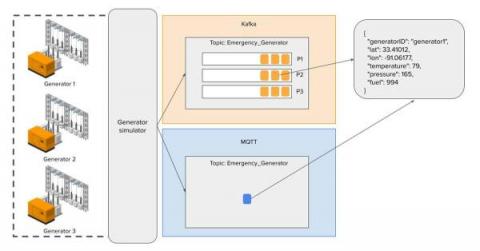Operations | Monitoring | ITSM | DevOps | Cloud
InfluxData
Performance improvements to aggregateWindow in Flux
Performance improvements to movingAverage and cumulativeSum in Flux
TL;DR InfluxDB Tech Tips: Handling JSON Objects and Mapping Through Arrays
There are multiple ways to use Flux to bring in data from a variety of different sources including SQL databases, other InfluxDB Cloud Accounts, Annotated CSV from a URL, and JSON. However, previously you could only manually construct tables from a JSON object with Flux as described in this first example. We’ll describe how to work with three examples with increasingly complex JSON types. First we will describe how to work with these JSON types with metasyntactic examples.
Python MQTT Tutorial: Store IoT Metrics with InfluxDB
MQTT is a standard messaging protocol used for the Internet of Things (IoT) because it requires minimal resources and can be executed by small microcontrollers found in connected devices. IoT devices have a real need for this type of lightweight protocol because it guarantees fast and reliable communication with minimal hardware requirements, keeping power consumption and manufacturing costs low.
TL;DR InfluxDB Tech Tips: From TICKscripts to Flux Tasks
If you’re a 1.x user of InfluxDB, you might be a Kapacitor user as well. If so, you’re also familiar with TICKscripts, the data processing and transformation language for Kapacitor, the batch and stream processor for InfluxDB. Kapacitor is a great tool, but it’s largely a black box, so using and implementing TICKscripts to execute data processing tasks, checks, and notifications can be a challenging developer experience.
MQTT vs Kafka: An IoT Advocate's Perspective (Part 2 - Kafka the Mighty)
In Part 1 of this series, we started to compare the uses of Kafka and MQTT within an IoT infrastructure. It was concluded that in a basic publish-and-subscribe model of an IoT device, Kafka might simply be overkill.











